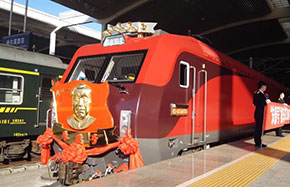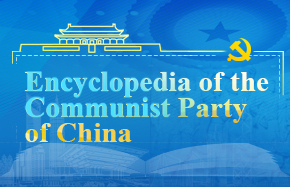US urged to join Belt and Road Initiative
Many countries have shown great enthusiasm toward China's Belt and Road Initiative and are keen to seize the opportunities it provides.
Since the initiative was first proposed in 2013, and up until May 2015, China invested $161.2 billion in major energy and transport infrastructure projects in 64 countries across the Eurasian continent.
A dedicated Silk Road Fund has been set up to finance this economic development plan, and China took the lead, with 57 other nations, to establish the Asian Infrastructure Development Bank (AIIB).
The Belt and Road Initiative is based on 5,000 years of Chinese traditional culture and core values. It stands by the principle of jointly discussing, building and sharing, in order to build a new model of international cooperation that bridges governments, citizens and nations.
It is about fostering a prosperous, stable, pluralistic and inclusive society that will ultimately engender world peace and harmony. China has no intention of claiming the top spot. It is not attempting, through this initiative, to establish an international institution or organization that provides sweeping and unconditional assistance for the building of bridges, high speed rail, power grids, optical fibre and oil and gas pipeline networks. It is instead a call on all nations to respect the spirit of "peace and cooperation, openness and inclusiveness, mutual learning and mutual benefit" once embodied in the ancient Silk Road. It is a call for joint participation and preparation, in accordance with national interests and the interests of our citizens. This is something that cannot be achieved overnight.
Existing multilateral organizations such as the Asian Development Bank and World Bank are simply unable to provide the capital necessary for maintaining the current rate of regional economic growth. Even with the AIIB's statutory capital of $100 billion fully deployed, there will still be an annual capital gap of $600 billion in Asia, equivalent to 70-80 percent of total needs. That is a factor that continues to limit the development of regional countries, and is an area where private capital is desperately needed.
It is on this basis that the US should actively take part in and advance, together with China, the Belt and Road Initiative.
Today, with the participation of 65 countries along the "belt" and "road" (among them 63 percent of the world population who contribute to 40 percent of global GDP growth), the initiative is becoming a driving force behind the international agenda, and that is something that the US should also be a part of.
There are three ways in which the US can play a more constructive role in the Belt and Road strategy:
1. "Made in China, safeguarded by the USA" - The US enjoys superior force projection, homeland security and cyber-defense capabilities, and is capable of providing security for key infrastructure along the "belt" and "road".
2. The Belt and Road strategy could seek to attract American and global private capital. Funds set up by specialized think tanks, private consortia, etc, should be given full sway within the initiative.
3. US technology, engineering and construction companies taking part in related projects will be able to offer best practices as well as quality and safety standards. Their participation will also help ensure that international labor, environmental and commercial standards are met.
The Belt and Road strategy, by facilitating industrial development and alleviating poverty in regional countries, also will help contribute to the social stability of Middle Eastern countries.
Only by fundamentally addressing the root causes of such deep-seated social problems will the youth in these countries be able to see a future. Only then will they have an environment that can be sustainably developed.
The writer is deputy chairman and secretary general of the China Energy Fund Committee.




















